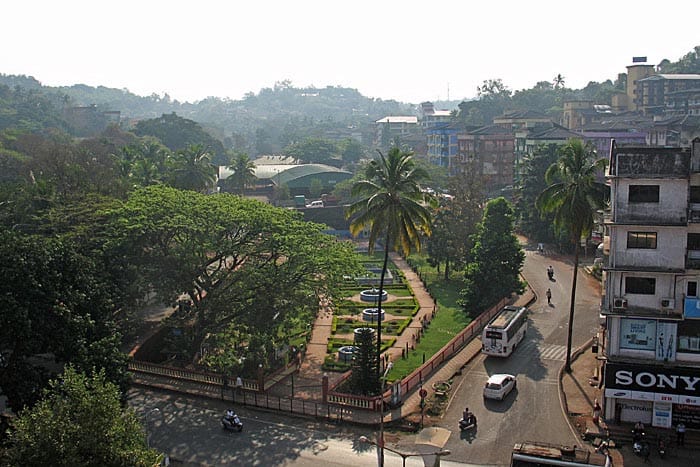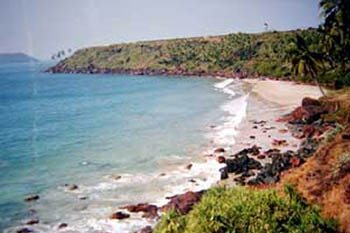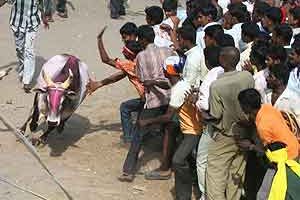
Goa is famous for its Portuguese Roots and Delightful Beaches
By Susan McKee
India is a vast subcontinent encompassing many cultures, several religions, various climates, and tangled history. Goa is a good place to start exploring.
Although Great Britain ruled the Raj for almost 90 years — and bequeathed a common commercial language and a (once) robust rail system — other countries also established beachheads there over the centuries.

Portugal’s Colony in Goa
One notable colonizer was Portugal. Remember Henry, the 14th-century Portuguese prince known as the Navigator (1394-1460)?
Although he never sailed the seas himself, he financed many voyages furthering exploration and trade, and sponsored the collection of geographic knowledge and cartography.
Under his direction, the Portuguese developed the caravel, a highly maneuverable ship that could explore rivers as well as oceans. With this new information and technology, Portugal set out to trade with the world.
The Portuguese influence is still in evidence throughout the Goa state, which became part of India in 1961. The smallest in area of all Indian states, it’s the only part of the subcontinent where Roman Catholic churches, Hindu temples, and Muslim mosques co-exist (Portuguese rule superseded Muslim rule).
It’s the only place in India where it’s possible (at least when I was there) to order beef at a restaurant.
The Fabulous Beaches of Goa
Goa’s defining feature for today’s mostly European tourists is the beaches. Dozens of elegant resorts have been built along the coast with all the expected international luxury brand names: Leela, Le Meridien, Taj, Vivanta, Marriott, Grand Hyatt, Radisson Blu, and more.
Reserve a stay at one of these and a hotel rep will meet you at Dabolim Airport and whisk you away to walled and isolated splendor.

That wasn’t my style. I had just a week, and I wanted to see the non-touristy side of Goa. I selected midrange locally-owned hotels — one in Margão and the second in Anjuna.
Margão was a great place to start. It is in the less touristy south of Goa, and I was the only Westerner in my hotel (which seemed, at times, to terrify the staff).
But everyone at the Nanutel spoke English — as is typical in the hospitality industry in India — and I had no problems.
I loved lingering over the buffet breakfast served under a canopy on the rooftop terrace.

The city of about 90,000 is a bustling place. The walkable core includes restaurants, shops, a marketplace, historic buildings, and a flower-filled city garden named after its benefactor, His Highness the Aga Khan.
Lavish Gilt Interior
The historic Holy Spirit Roman Catholic Church with its white-washed exterior hides a lavish gilt interior.
It was built almost five centuries ago atop a Hindu temple that had replaced a Muslim mosque. Across from the church is a small landscaped area called Praça da Alegria, notable for its Portuguese tiles.
Visiting the Basilica
To get from Margão to Anjuna, I hired a car and driver upon the recommendation of the hotel desk. On the way, we stopped at the Basilica of Bom Jesus in the town of Old Goa. St. Francis Xavier “resides” permanently here, in a casket high above the altar.
The site attracts Roman Catholic pilgrims from around the world because St. Francis Xavier, born in the Kingdom of Navarre in 1506, was a co-founder of the Society of Jesus (better known as the Jesuits).
The northern part of Goa is known best for its seaside resorts — there are lots more tourists here, especially from Russia. It’s the only place in India that I’ve seen blond, dreadlocked surfer dudes (a subspecies of backpacker I thought had died out).

I stayed somewhat inland at a quirky hotel attached to what seemed to be a magnet for Westerners: the German Bakery.
Why? One thing you can seldom find in India is Western-style bread — you know, the stuff we slice and make sandwiches with or the cinnamon rolls we feast on at breakfast.
The German Bakery in Anjuna has all kinds of bread just like in Europe. But, there’s more.
It’s open 8 a.m. ’til 11 p.m. each day, serves a full menu of food from Asian and European cuisines (including options that are vegan or gluten-free) and, on Wednesday evenings, presents live entertainment.
And there’s free WiFi throughout. I could have stayed a month.
Anjuna’s Famous Market
The primary draw for Anjuna is the Wednesday market. It’s enormous. Every souvenir you’ve ever wanted can be found here.
Vendors come from across India and as far away as Tibet to bargain with a clientele of mostly European tourists.
Do note that Goa is subject to tropical monsoons and astonishingly high temperatures in the summer. Plan your trip with an eye on the calendar, and don’t forget a hat, sunscreen, and an umbrella.

- Sicily’s Special Places: Here are Five Favorites - March 12, 2020
- A Summer Cruise in the High Arctic - September 26, 2019
- The Tangled Cultures of Goa, India - March 8, 2019






well said, nice post about GOA culture. Churches in Goa are very good.
Thank you, Susan! I absolutely loved your post! I could relate with your need for less touristy places to explore as Goa is always crowded. On my last visit to Goa, I stayed in a local homestay (a magnificent heritage home) run by a Goan family and I loved it! During the stay, I was treated with the best of Goan cuisine and my host was a gem of a person who had a vast knowledge of Goan history. This allowed me to experience the true local Goan way of life.